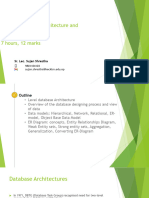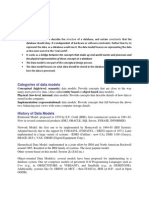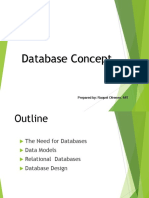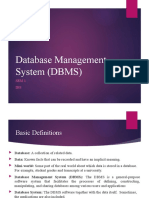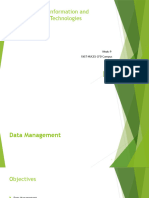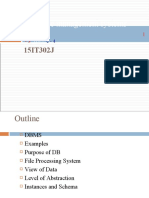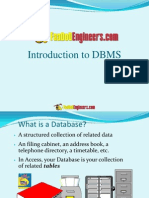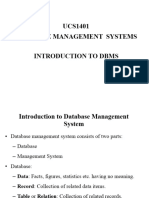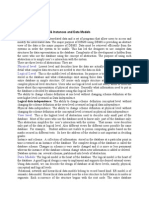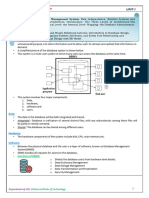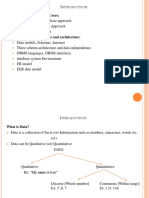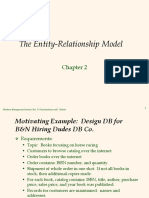0% found this document useful (0 votes)
3 views13 pagesViews of Data&Data Models
The document discusses the structure and purpose of a Database Management System (DBMS), emphasizing data abstraction through physical, logical, and view levels. It outlines different types of data models, including relational, entity-relationship, object-based, and semistructured models, each with unique characteristics. Additionally, it highlights the importance of schemas and data independence in database design.
Uploaded by
secretf791Copyright
© © All Rights Reserved
We take content rights seriously. If you suspect this is your content, claim it here.
Available Formats
Download as PPTX, PDF, TXT or read online on Scribd
0% found this document useful (0 votes)
3 views13 pagesViews of Data&Data Models
The document discusses the structure and purpose of a Database Management System (DBMS), emphasizing data abstraction through physical, logical, and view levels. It outlines different types of data models, including relational, entity-relationship, object-based, and semistructured models, each with unique characteristics. Additionally, it highlights the importance of schemas and data independence in database design.
Uploaded by
secretf791Copyright
© © All Rights Reserved
We take content rights seriously. If you suspect this is your content, claim it here.
Available Formats
Download as PPTX, PDF, TXT or read online on Scribd
/ 13


